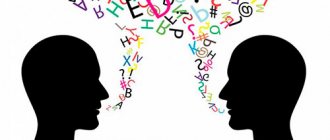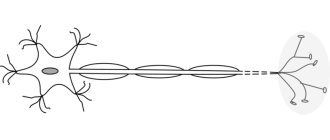Recently, methods of distributional semantics have become widespread for assessing semantic similarity. These approaches have shown themselves to work well in a number of practical problems, but they have a number of severe limitations. For example, linguistic contexts turn out to be very similar for emotionally polar words. Consequently, antonyms from the point of view of word2vec often turn out to be close words. Also, word2vec is fundamentally symmetrical, because the basis is the co-occurrence of words in the text, and the popular measure of similarity between vectors - the cosine distance - also does not depend on the order of the operands. We want to share with the community the database of associations we have collected for words and expressions in the Russian language. This dataset does not have the disadvantages of distributional semantics methods. Associations retain emotional polarity well and they are asymmetrical in nature. We'll tell you more in the article.
In the dictionary D.N. Ushakova
ASSOCIATION, associations, women. (from Latin associo - unite). 1. someone or something. The same as a joint union, society, partnership (as applied to some organizations). Russian Association of Scientific Research Institutes. 2. what and what, what with what, between what and what. The connection between individual ideas, by virtue of which one idea causes another (psych.). Association by similarity. Association of word sounds with meanings. Association of word sounds and meanings. Association between sounds and meanings.
Why does distributive semantics “not see” part of the world picture?
Written language is highly compressed information.
To unpack it and understand the essence, we connect additional resources - common sense, our knowledge of the world, cultural context. If some of this information is not available to you, for example, you are joining a new company or diving into a new subject area, you will be forced to fill knowledge gaps by asking questions or studying additional sources. The computer is deprived (yet) of such an opportunity to learn. Therefore, it is important for an NLP developer to understand that some useful information about the world is not and cannot be in the text. It needs to be assembled and connected additionally.
In the Encyclopedia Dictionary
in psychology - a connection that arises under certain conditions between two or more mental formations (sensations, motor acts, perceptions, ideas, etc.); the basic concept of associative psychology. Associations are distinguished by contiguity (in space or time), similarity and contrast. The term was introduced by J. Locke (1698).—plant, the main classification unit of plant communities (phytocenoses). Characterized by a certain floristic composition. The association is named according to the dominant species of one or several layers, for example. in the forest there is a spruce-blueberry association - union, association.
What are associations?
Everyone played a game in childhood: when one person names a word, a neighbor offers his own association.
Then an association will come up with an association, etc. It is often interesting not only to hear another person’s association, but also to understand his train of thought, how he came to this or that word. This gives us a little insight into how we think. There is another way to look at this. Living people have the most relevant and uncompressed information about the world and language. Related to this is our amazing ability to resolve linguistic ambiguities. Any language model will be a slice of this information with inevitable losses. Distribution models provide one perspective, associations allow us to look at it from a different angle. Perhaps the path to a slightly more voluminous language picture lies in using both models.
In the dictionary Dictionary of foreign words
and, f.
1. Association of persons or institutions of the same type of activity. Sociological a. A. nuclear physicists.||Cf. CONFEDERATION" title='CONFEDERATION, CONFEDERATION is, what is CONFEDERATION, CONFEDERATION interpretation'>CONFEDERATION.
2. psychol. A relationship between separate representations, in which one of the representations causes another. A. by similarity.
3. chem. Combining molecules (or ions) into doubled, tripled, etc. aggregates, as well as such aggregates themselves.||Cf. DISSOCIATION" title='DISOCIATION, DISSOCIATION is, what is DISSOCIATION, DISSOCIATION interpretation'>DISSOCIATION.
4. astr. A cluster of young stars, indicating the ongoing process of star formation in the Galaxy.
5. bot A set of homogeneous plant communities with the same composition of plant species and with similar relationships both between organisms and between them and the environment.
Share the meaning of the word:
Meaning of the word association
Association
of EAST ASIA STATES (ASEAN) is a regional intergovernmental political and economic organization. Created in 1967 on the basis of the Bangkok Declaration of the meeting of the foreign ministers of Indonesia, Malaysia, Singapore, Thailand and the Philippines. In January 1984, Brunei became the sixth member of the Association. Vietnam has applied to join ASEAN. Formally, ASEAN is open to the participation of all states in Southeast Asia that support its goals and principles. The goals and objectives of ASEAN are declared to be: accelerating the economic, social and cultural development of its member states on the basis of cooperation and mutual assistance, promoting peace and stability in the region based on “respect for justice and the rule of law in relations between countries” and adherence to the principles of the UN Charter. maintaining mutually beneficial cooperation with general and regional international organizations. having similar goals, the highest body of ASEAN, according to the Bangkok Declaration, is the annual conference of foreign ministers. held in turn in each of the Member States. Possible also. convening extraordinary or special meetings of foreign ministers. The daily activities of the Association are managed by a Standing Committee consisting of the Minister of Foreign Affairs of the country in which the next conference will take place (chairman), and the ambassadors of the remaining ASEAN member states in this country. Since 1976, ASEAN has periodically held meetings of heads of government not provided for in the Bangkok Declaration member states, essentially becoming the highest body of the Association, as well as meetings of the ministers of economy, finance, agriculture (the most important decisions of the latter are subject to approval by the ministers of foreign affairs) Since 1977, the working bodies of ASGAN are 6 committees on finance and banking operations, on industrial raw materials and nepwni-ke, on food, on agriculture and forestry economy, trade and tourism, transport and communications. In addition, the ASEAN Standing Committee has a budget subcommittee, which is responsible for the allocation of the Association's resources. The ASEAN Secretariat was established in 1976. It is headed by the ASEAN Secretary-General, appointed alternately by the governments of member states (in alphabetical order) for a period of 2 years. The Ministry of Foreign Affairs of each member country also has a national secretariat of ASEAN. Decisions in ASEAN are made on the basis of consensus. Since the early 70s, ASEAN countries have been actively expanding and strengthening political cooperation. At the conference of ASEAN foreign ministers in Kuala Lumpur (Malaysia) November 27, 1971 I The Declaration on the Transformation of Southeast Asia into a Zone of Peace was adopted. freedom and neutrality In 1976, at the first summit of the ASEAN countries, the ASEAN Declaration of Concord and the Treaty of Friendship and Cooperation in Southeast Asia were signed, which signified a significant expansion of the scope of interaction and strengthening of political solidarity. At the same time, there is a tendency towards the development of military cooperation between the ASEAN countries in bilaterally. Currently, the foreign policy activities of the ASEAN countries are coordinated at the level of foreign ministers. with the USA, Japan, Canada, Australia. New Zealand, countries of the European Union. The location of the secretariat is Jakarta (Indonesia).Dictionary of economic terms
What can you do with the dataset?
We see the ultimate goal of all language research as being to teach a computer to understand language at a human level.
This does not necessarily imply the ability of a machine to think (no matter what we mean by this concept), but rather skillfully emulate how a person works with language. I would like to hope that additional sources of information, of which there are not many for Russians, will help scientists and researchers advance along this path. Below we offer several areas of research that we found quite interesting:
- Implement the assoc2vec algorithm, taking ideas from GloVe as a basis and replacing contextual co-occurrence with associative one.
- Cluster associations within each individual head word or the dataset as a whole, for example, to identify clusters of individual word meanings.
- To explore the possibility of automatically constructing a thesaurus of the Russian language. (Observation: Unlike contexts, the association matrix is asymmetric.)
- Use cross-sections of associations by gender to conduct sociological research.
- Make an interesting visualization of the associations and connections themselves within the dataset. (For example, a map of all possible paths between associations.)
- Investigate the nature of symmetry/asymmetry of the relative frequencies of mirror associations.
These are just a few ideas; in reality there may be many more. Come up with your own experiments and be sure to share the results on Habré or even in scientific journals.
Association from a psychological point of view
Association is a relationship between events that arises due to the presence in a person’s memory of experiences indirectly related to various things.
One event, according to a person, entails another if a similar experience is fixed in his memory.
Ideas about associations first appeared in antiquity. They were expressed by such eminent philosophers and scientists as Aristotle and Plato. However, the concept of association was introduced by John Locke in 1698.
Associations are built through short-term neural connections, reinforced by conditioned reflexes . We perceive objects and phenomena one way and not another precisely because we build numerous associative chains that explain their essence.
Reorganization
The association may be reorganized into various forms of non-profit organizations.
When reorganizing this entity, all documents that are significant are transferred to the state, namely to the archives
If there are any, documents with information about personnel are also transferred to the state. When transferring documents, in which they will be stored must be met
The liquidation of an association occurs either by a court decision or by a decision of its members. In case of liquidation, a special commission is appointed, which sets deadlines and determines the procedure for liquidation.
Property
The association's property is formed from the proceeds of the founders, voluntary contributions and income received from securities, deposits and shares in which funds were previously invested.
The essence of the concept of “association”
Definition 1
Association is a connection between separate representations, with one representation causing another.
The term “association” was introduced by J. Locke in the 17th century, and the phenomenon itself was described by Aristotle and Plato.
In the experience of an individual, a natural connection arises between two contents of consciousness and is expressed in the fact that the manifestation of one of the contents causes the appearance of the other.
The term association is used in various scientific fields, for example, philosophers consider association as a reflection of the interconnections of objects of reality in the form of a natural connection between neuropsychic phenomena. Problems of associations are deeply studied by psychologists, who define association as a connection between elements of the psyche that arises in the process of thinking.
Are you an expert in this subject area? We invite you to become the author of the Directory Working Conditions
Under certain conditions, the appearance of one element evokes an image of another element associated with it.
For a long time, scientists debated the mechanism by which associations arise. Some considered them to be a “shadow” of brain processes that are combined according to certain physiological laws, while others considered their occurrence to be the laws of consciousness in itself. As for the development of associative psychology in Russia, we must name the names of I.M. Sechenov and I.P. Pavlova. Sechenov described the psychological basis of association, and Pavlov's school studied the physiological mechanisms of association. The scientist himself believed that the basis of all types of associations are temporary neural connections, therefore, when there is no biological and social support for the conditioned reflex connection, associations are easily inhibited and fade away.
The formation of associations is associated with corresponding mental processes when they are simultaneously experienced or immediately after each other. The main condition for the formation of associations is coincidence in time. The second condition for their formation is repetition, for example, in order to remember a phone number, it must be repeated several times. It’s the same with foreign words – the more often a word is repeated, the faster and better it is remembered.
Finished works on a similar topic
Course work Types of associations 460 ₽ Abstract Types of associations 260 ₽ Test work Types of associations 220 ₽
Receive completed work or specialist advice on your educational project Find out the cost
Associations are based on neural connections, and they are also the basis of conditioned reflexes. Their formation occurs when two processes of excitation in the cerebral cortex coincide in time and are consolidated as a result of repetition. I. P. Pavlov called these connections temporary connections. The scientist believed that temporary nervous connection is the most universal physiological phenomenon in the world of animals and humans. I.P. Pavlov and his students, as a result of their research, established the basic laws for the formation of connections of this kind.
Note 1
Currently, the physiological basis of associations has been studied in sufficient detail.
Regulation of associations
The legal framework governing the work of the association is the Civil Code and the Law “On Non-Profit Organizations”.
In our country, associations can be created to protect various types of interests and coordinate the activities of entrepreneurs.
People included in the association pay subsidies in the amount that is established by each specific association. They retain their independence, but have certain responsibilities within the association . The degree of responsibility is established by each association independently.
Documentation
The main documents that every association must have are the charter and the constituent agreement.









